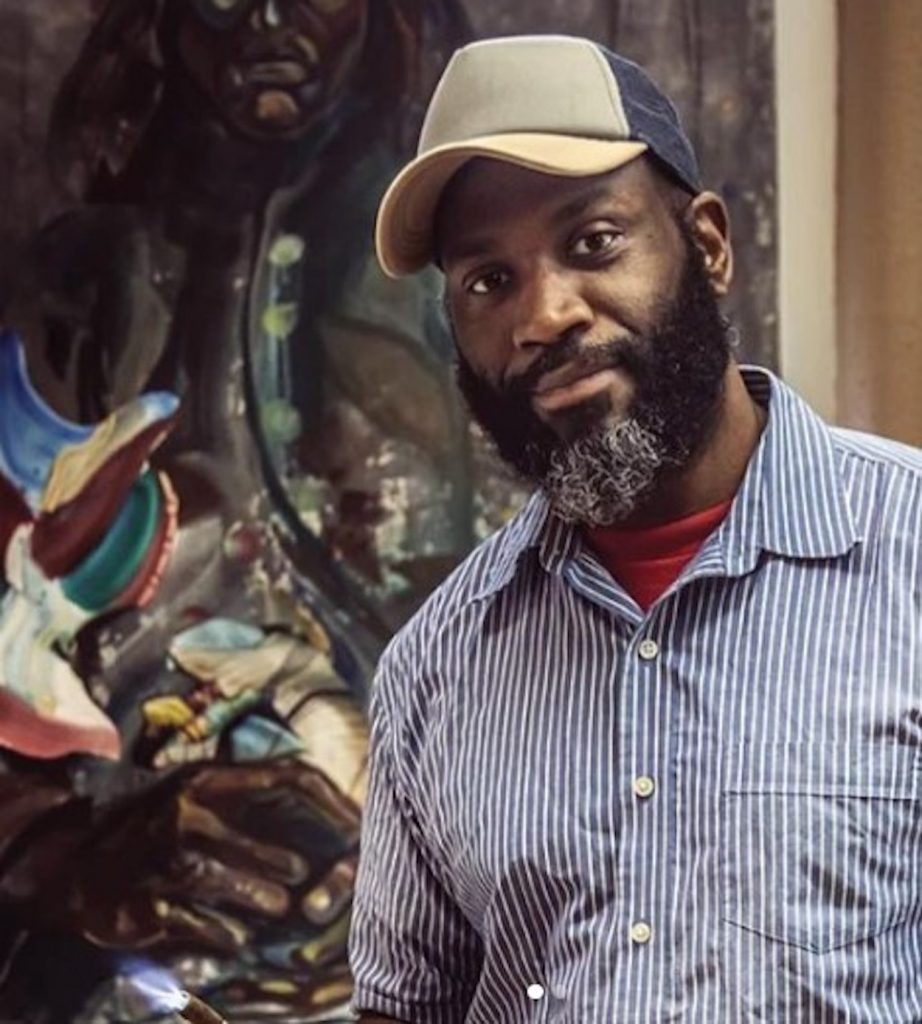Here, we ask an artist to frame essential details behind one of their latest works.
Bio: Stan Squirewell, 45, Louisville and New York City.
Title of work: Mrs. Johnson’s Family Picture Day (2023).
Where to see it: Claire Oliver Gallery, New York, until Jan. 13.
Three words to describe this work: Matriarchal, layers, permanence.
What was on your mind at the time: My source material is found photography from the 19th- and early 20th-century. Typically these are unknown subjects, but by the very nature of them having had their portraits taken, we know that they weren’t nobody: often it meant they were people of means. I love the process of layering collage over these anonymous figures and recreating identities for them layer by layer. In this work, the woman is squarely in the center. This dynamic was very familiar to me, it’s how I understand Black families to be, held together by the women as central figures.
It reminded me of my own experience of having our family portraits taken at Easter when I was growing up. I didn’t like the experience at the time: getting on our best clothes, sitting still for the photographer. But now I cherish these images. I love seeing photographs of my elder relatives younger than me. it’s a very human link to the past, to something totally ephemeral and fleeting: a moment in time.
In Mrs. Johnson’s Family Picture Day, I invented a name and story for this family that was very relatable to my own experience. Mrs. Johnson is at the center of that family, and she is looking her best.
An interesting feature that’s not immediately noticeable: In a lot of my work, I use layers of collage to create identities, often this is through clothing and fashion as a way that we all use to communicate with each other nonverbally. In Mrs. Johnson’s Family Picture Day, I use layers of textile prints and logos as a way of commenting on both labor and the idea of brands “naming” material that often carries the labor of others within. So I’m exploring that as well in this artwork.
How the work reflects your practice as a whole: I love questioning histories that we accept as true. My source material is old photographs of anonymous Black and Brown people, where there is an assumption that these folks were voiceless or somehow disempowered. I don’t agree with that idea at all, photography was expensive so folks who had their portraits taken were often of some standing in the world. In my family history, I grew up identifying as a Black man and later learned that I have Indigenous roots, which has fueled a lot of my desire to question narratives that we’re taught and that we often accept.
In this work, I create an identity for Mrs. Johnson and her family because I ultimately related to the image when I saw it. That’s key to my work as well: I choose my images out of a sense of familiarity with the subjects. I love that photography captures these snapshots that live on forever. Nothing can do what photography does, it holds time still.
One song that captures the work’s essence: Chuck Brown’s song “It Don’t Mean a Thing.”

